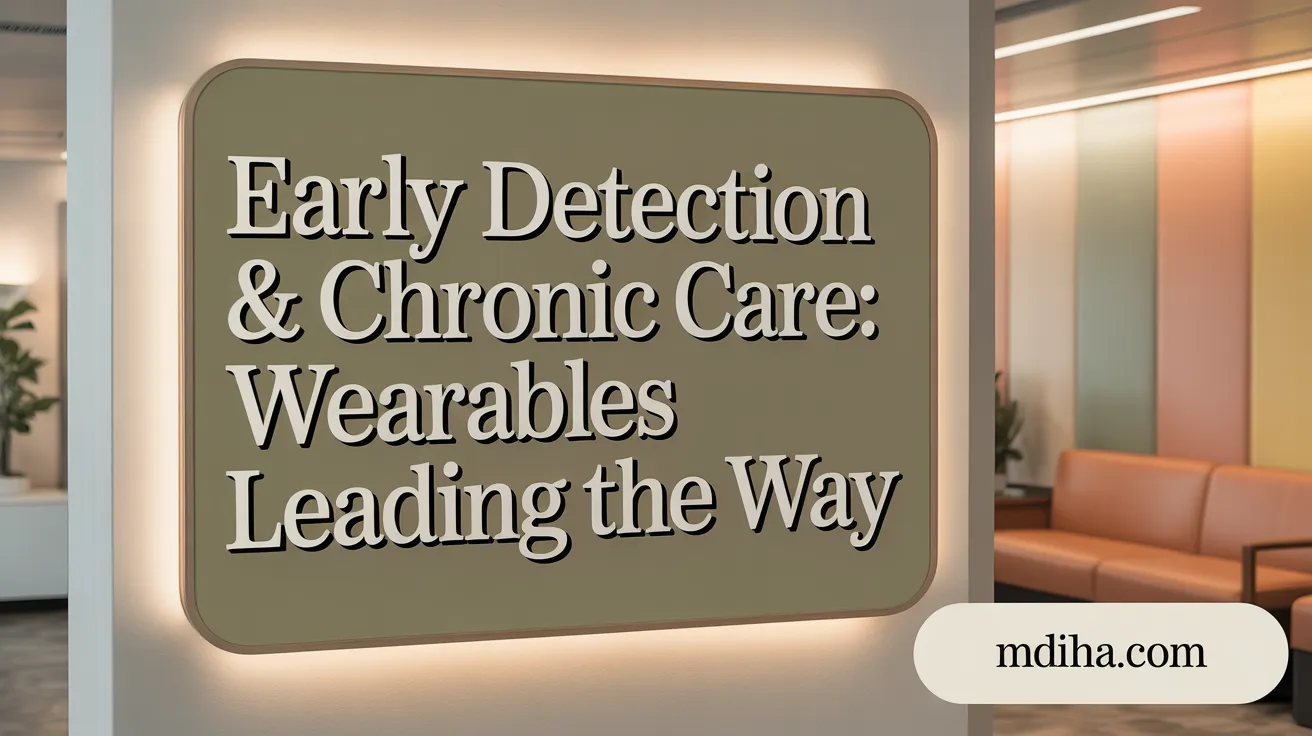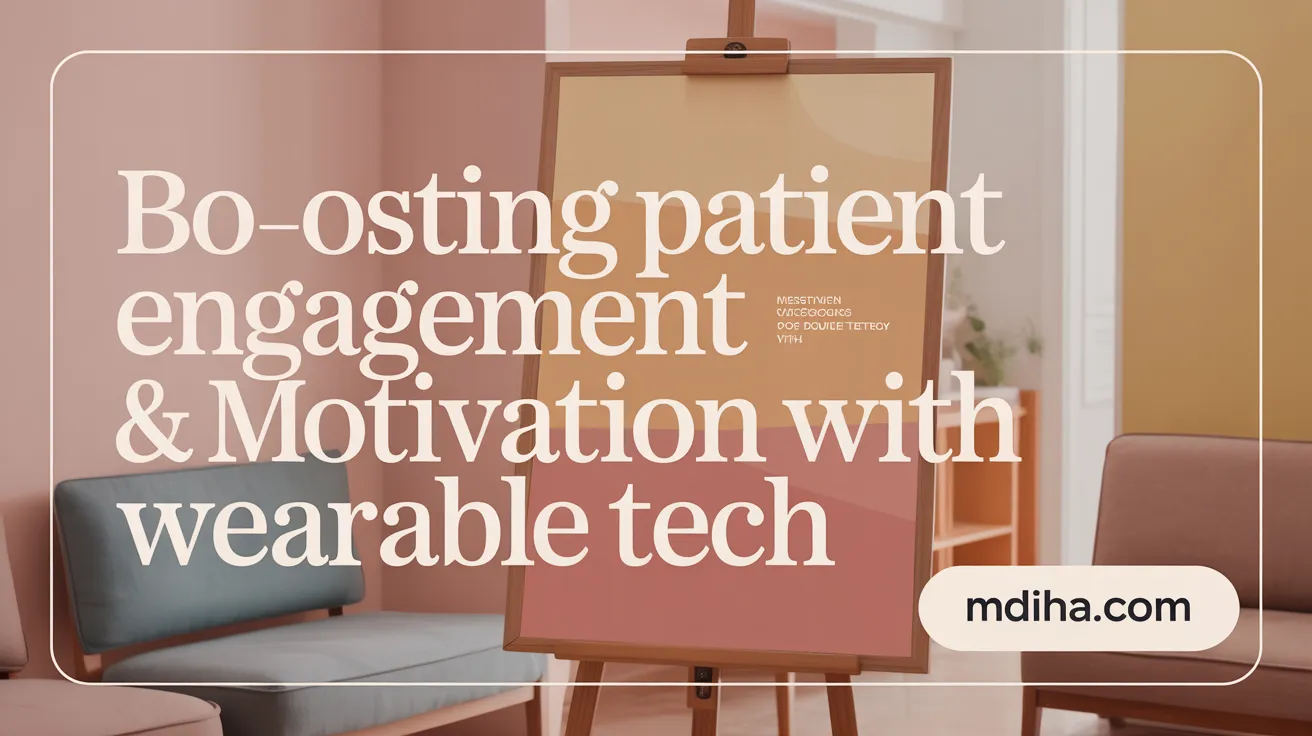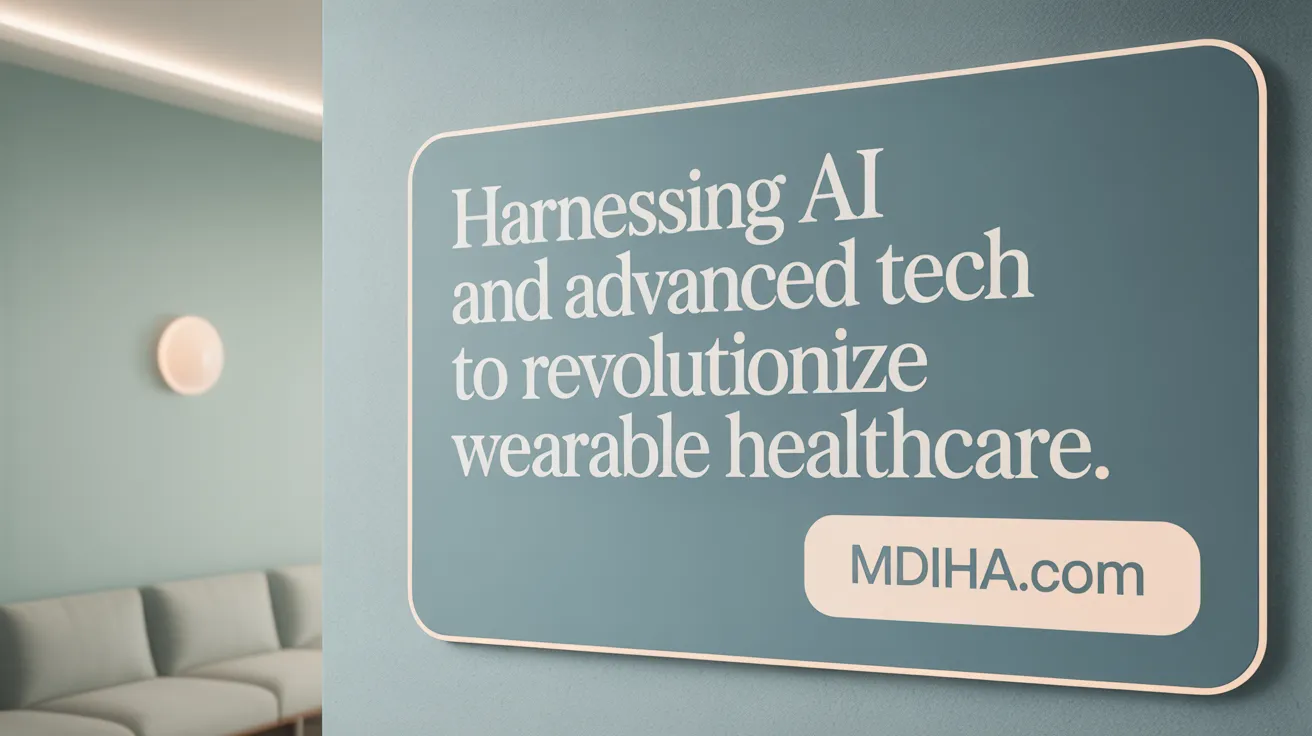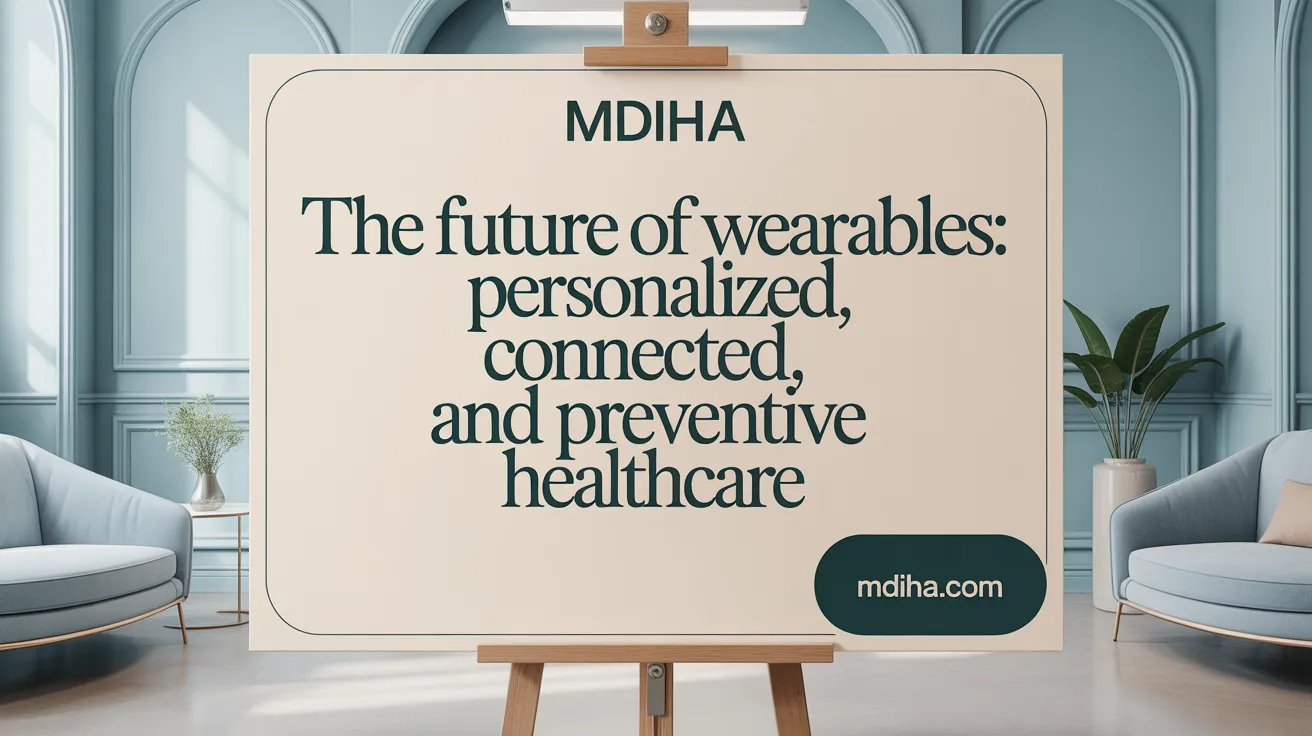A New Era in Preventive Healthcare
Wearable technology is reshaping the landscape of preventive health care by enabling continuous monitoring, early detection of diseases, and personalized health management. As devices like smartwatches, fitness trackers, and medical-grade wearables become increasingly sophisticated, they empower both individuals and healthcare providers to take proactive steps toward better health outcomes. This article explores how wearable tech is revolutionizing preventive healthcare, addressing benefits, challenges, and future innovations.
Continuous Health Monitoring: From Fitness to Clinical Insights
What types of wearable health devices are used in preventive care?
Wearable health devices used in preventive care span a variety of forms and functionalities. Common examples include smartwatches (such as Apple Watch), fitness trackers (like Fitbit), continuous glucose monitors (e.g., Dexcom G7, Abbott FreeStyle Libre), ECG monitors, biosensors embedded in patches or smart clothing, and smart rings like the Oura Ring. Some specialized devices also track electrolyte levels or detect biomarkers through microfluidic patches.
Physiological parameters monitored
These devices monitor vital physiological parameters crucial for health tracking, including heart rate, activity levels, sleep patterns, blood pressure, glucose levels, respiratory rate, blood oxygen saturation, electrocardiograms (ECGs), and body temperature. Advanced wearables further detect stress markers via heart rate variability and even subtle biomarker changes such as cortisol for personalized healthcare (wearable biosensors for stress management).
Role in continuous data collection and health status tracking
Wearables enable continuous, real-world data collection beyond clinical settings, offering richer datasets than traditional snapshot measurements taken during office visits. This continuous monitoring supports early detection of health issues such as atrial fibrillation, diabetes, and sleep disorders. Integration of these devices with telehealth and electronic health records (EHRs ensures real-time clinician access and personalized health interventions. By tracking health metrics 24/7, wearables provide comprehensive, objective insights into an individual's health status, facilitating proactive and preventive healthcare management (Wearable technology benefits).
Early Disease Detection and Chronic Condition Management

How do wearables aid in early detection of diseases?
Wearable devices aid early disease detection by continuously analyzing physiological data to spot irregularities. Smartwatches with ECG sensors can identify atrial fibrillation — a common arrhythmia linked to stroke risk — with high sensitivity and specificity. This allows users and clinicians to intervene promptly and potentially prevent serious complications.
Detection of atrial fibrillation and diabetes
Wearables use advanced sensors and algorithms to detect atrial fibrillation by monitoring heart rhythms in real-time. Continuous Glucose Monitors (CGMs), such as the Dexcom G7 or Abbott FreeStyle Libre, track blood sugar levels around the clock. This empowers diabetes patients to manage their condition proactively, spot fluctuations early, and adjust treatment accordingly.
Monitoring chronic diseases
Beyond detection, wearables support chronic disease management by providing ongoing vital sign monitoring. Parameters like heart rate variability, blood pressure, respiratory rate, and glucose levels can be tracked remotely, allowing healthcare providers to tailor interventions based on real-time data. Wearables for chronic condition management.
Role of wearable ECG and continuous glucose monitoring
Wearable ECG devices enable continuous cardiac monitoring outside of clinical settings, reducing the need for frequent hospital visits and enabling quicker diagnosis. Similarly, CGMs remove the burden of intermittent glucose checks, fostering better glycemic control. Integration with healthcare platforms further supports personalized care between patient and provider.
These technologies enhance early diagnosis and ongoing management, improving patient outcomes and potentially reducing healthcare costs through timely interventions and greater patient engagement.
Integration with Healthcare Systems and Telemedicine
How does wearable technology integrate with healthcare systems?
Wearable health devices seamlessly connect with healthcare systems through dedicated apps and platforms that synchronize collected data with electronic health records (EHRs). This integration allows for continuous, real-time patient monitoring beyond traditional clinical settings.
Telehealth enhancements
By feeding vital physiological data such as heart rate, blood pressure, glucose levels, and sleep patterns directly into telehealth platforms, wearables empower healthcare providers to remotely assess patients’ health status. This connection minimizes the need for frequent in-person visits, which is particularly valuable for managing chronic diseases and reducing healthcare system burdens.
Real-time clinical decision support
The real-time data streaming from wearable devices supports clinicians in making timely and informed decisions, improving personalized care plans. Continuous monitoring can alert providers and patients to early signs of health deterioration, facilitating proactive interventions and personalized health coaching. Ultimately, this interconnected system fosters enhanced patient-provider communication and promotes more efficient healthcare delivery.
Empowering Patient Engagement and Behavior Change

In what ways do wearables support patient behavior change and engagement?
Wearable devices play a significant role in encouraging behavior change and boosting patient engagement. They provide continuous, real-time feedback, allowing users to monitor health metrics such as activity levels, heart rate, or sleep patterns throughout the day. Through goal setting and progress tracking features, wearables motivate users to meet incremental targets, such as increasing daily step counts or improving sleep quality.
Motivational mechanisms built into these devices include reminders to move, alerts to maintain hydration, and social support through challenges or sharing achievements, which foster ongoing commitment to healthier lifestyles. These dynamic interactions elevate user awareness and help combat chronic health issues like obesity. Wearables have been shown to encourage physical activity via such behavior change mechanisms (source.
Healthcare provider involvement further empowers patients by interpreting recorded data, offering personalized advice, and reinforcing the importance of consistent device use. Clinicians can integrate wearable insights into tailored treatment plans, facilitating shared decision-making and enhancing the efficacy of preventive care and chronic disease management (source). The integration with telehealth and EHRs supports clinical decision making and patient-provider communication (source).
By combining technology-driven motivation with professional support, wearables serve as effective tools for sustaining behavioral changes and improving long-term health outcomes (source.
Challenges in Wearable Tech Adoption and Use
What challenges hinder the adoption of wearable health technologies?
Adopting wearable health devices is challenged by several factors, foremost among them being data accuracy and device reliability. Sensor variability and environmental influences can lead to inconsistent health measurements, causing users and providers to question the trustworthiness of wearable data. This distrust may compromise health decisions based on such information.
Another major concern is privacy and security. Wearables collect sensitive personal health data, making them a target for breaches. Ensuring compliance with regulations like GDPR in Europe and HIPAA in the U.S. is essential but complex, given the diversity of devices and platforms involved.
Barriers are particularly pronounced among older adults, who may face difficulties with device complexity, small interface designs, and lack of familiarity with technology (Technical difficulties for older users. High costs of many medically graded wearable devices also restrict access, especially for lower-income populations (Cost and accessibility of wearables.
Additional issues include interoperability challenges, as data from different devices may not seamlessly integrate with electronic health records systems. These limitations constrain the clinical utility of wearables and may reduce long-term engagement and equity in health monitoring.
Addressing these challenges requires improving sensor technology to enhance data quality, strengthening data protection protocols, designing age-friendly devices, reducing costs, and developing universal standards for data exchange.
Technological Innovations and AI Integration

How are AI and advanced technologies shaping wearable health devices?
Artificial Intelligence (AI) is revolutionizing wearable health devices by enabling real-time interpretation of extensive biometric data streams. AI algorithms analyze signals from advanced sensors—such as photoplethysmography and ECG—to identify early signs of health anomalies and predict risks like atrial fibrillation or glucose fluctuations.
Advanced biosensors embedded in adhesive patches or fabrics collect continuous data on vital signs and biomarkers such as cortisol, supporting personalized stress management and preventive healthcare. These sensor-embedded smart textiles offer non-intrusive, ongoing monitoring that reduces the need for clinical visits.
Hybrid wearable-implantable systems represent the next frontier, combining external sensors with implantable devices for comprehensive physiological monitoring. This integration enhances data accuracy and provides deeper insights into patient health, fueling better clinical decision-making (source.
AI also drives the development of digital twins—virtual physiological models of individual users—that simulate disease progression and treatment impact, empowering bespoke preventive care strategies (source).
Together, these technologies improve early detection capabilities, enable personalized interventions, and push wearable healthcare toward a proactive, continuous, and highly connected future (source).
Impact During the COVID-19 Pandemic and Infectious Disease Monitoring

What role did wearables play during the COVID-19 pandemic?
During the COVID-19 pandemic, wearable health devices became essential tools for helping healthcare systems manage the crisis. These devices enabled remote patient monitoring, allowing individuals to be observed without the risks associated with hospital visits. This approach significantly reduced the number of in-person appointments, helping to minimize exposure of healthcare providers to the virus.
Wearables monitored vital signs such as heart rate, blood oxygen levels, respiratory rate, and body temperature. By continuously tracking these indicators, wearables could detect symptoms suggestive of COVID-19 infection early, often before a patient sought clinical care. This early symptom recognition supported prompt medical attention and isolation measures.
The application of wearable technology also helped reduce the burden on healthcare facilities by facilitating self-monitoring and remote communication with clinicians. It empowered patients to participate actively in their health management, easing the demand on overextended health systems like the NHS and others globally.
Overall, during the pandemic, wearable devices not only advanced infectious disease monitoring but also helped ensure that care delivery continued efficiently with enhanced patient safety and system sustainability.
Future Outlook: Personalized, Preventive, and Connected Health

Market growth and technological trends
The wearable technology market is rapidly expanding and is anticipated to surpass $180 billion by 2030. This growth is fueled by continuous innovation in sensor technology, advanced biosensors, and AI integration. Future devices are expected to blend external wearables with implantable sensors, creating hybrid systems capable of comprehensive, real-time physiological monitoring. Smart fabrics, microfluidic patches, and wearable ECGs will further enhance the accuracy and scope of health data collection, supporting earlier diagnosis and better chronic disease management.
Enhanced personalization via AI and digital health ecosystems
Artificial intelligence will play a central role in transforming raw wearable data into actionable health insights. AI algorithms will enable hyper-personalized monitoring by detecting subtle health changes and predicting risks such as arrhythmias or metabolic imbalances. Integration with digital health ecosystems, including electronic health records and telehealth platforms, will facilitate seamless data sharing and real-time clinical decision-making. This interconnectedness empowers clinicians and patients alike, fostering proactive, individualized preventive care.
Addressing equity and ethical considerations
While wearables present vast potential, equitable access remains a critical challenge. Current usage disparities—especially among older adults, marginalized populations, and low-resource settings—must be addressed to avoid exacerbating health inequalities. Ensuring data privacy and security, compliance with regulations such as GDPR and HIPAA, and improving device interoperability are pivotal. Ethical frameworks guiding the responsible deployment of wearables and transparent patient consent will be key to building trust and broader adoption.
The future outlook for wearable technology in preventive health care is thus one of expansive growth, cutting-edge innovation, and patient-centered connectivity, balanced by a focus on inclusivity and ethical responsibility to maximize benefits across diverse populations.
Transforming Preventive Health with Wearables
Wearable technology stands at the forefront of revolutionizing preventive healthcare by enabling continuous monitoring, early disease detection, and personalized health management. Despite challenges such as data privacy concerns, accuracy issues, and adoption barriers, ongoing technological advancements—particularly through AI integration—promise to deepen the impact of wearables. By empowering patients and enhancing healthcare providers' capabilities, wearable devices are setting new standards for proactive, connected, and personalized care, heralding a healthier future for individuals globally.
